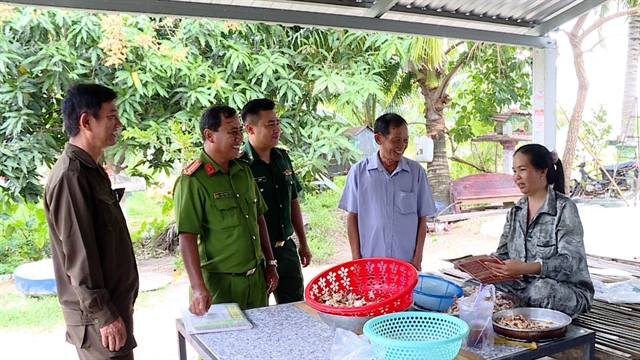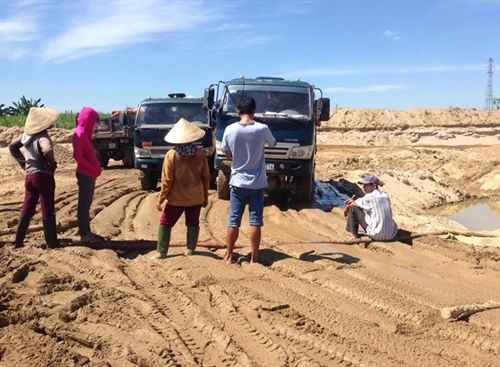 Society
Society

Hundreds of people in An Phú and Ngọc Thach hamlets in Tinh An Commune in central Quảng Ngãi City have gathered near the Trà Khúc River to stop trucks from removing sand from the river, the online Dân Trí reported.
 |
| The local people stop the strucks to protest sand exploitation in Trà Khúc River in Quảng Ngãi Province. - Photo news.zing.vn |
QUẢNG NGÃI – Hundreds of people in An Phú and Ngọc Thạch hamlets in Tịnh An Commune in central Quảng Ngãi City have gathered near the Trà Khúc River to stop trucks from removing sand from the river, the online Dân Trí reported.
The two hamlets, with more than 400 households and some 2,000 people, are located on the Trà Khúc River.
The local people has cultivated on mudflats for a number of years.
Yet, in recent days many businesses have removed very large amounts of sand in the upstream river. The loss of sand caused a high risk of erosion, which would engulf the people of the two hamlets.
Nguyễn Anh Tuấn, a resident of An Phú Hamlet, said, “They (the businesses) had exploited the sand without any announcement, and without approval of the locals.”
“Our grandparents’ graves and cultivated land were here. The sand exploitation will bring risks of erosion. When floods come, it will wash away everything and threaten our lives,” Tuấn said.
Meanwhile, Lê Thị Sự, who is living in Ngọc Thạch Hamlet, said that her family lived on crops grown on the mudflats. But now, the land was washed away due to massive sand exploitation.
“Before the sand exploitation, some people came to my house, asking to measure our land for compensation. But my family turned down their proposal.”
“Then they destroyed my 4,700sq.m. of land. Now we have nothing to live on”, said Sự.
Also, sand exploitation has created “death holes” alongside the river, which recently caused children to drown. – VNS